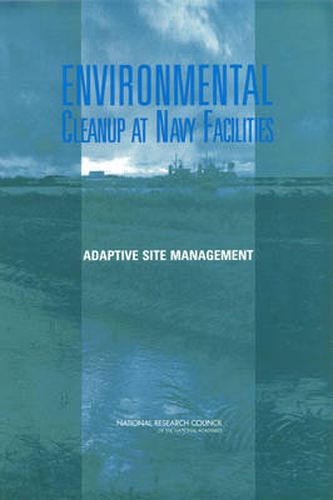Readings Newsletter
Become a Readings Member to make your shopping experience even easier.
Sign in or sign up for free!
You’re not far away from qualifying for FREE standard shipping within Australia
You’ve qualified for FREE standard shipping within Australia
The cart is loading…






The number of hazardous waste sites across the United States has grown to approximately 217,000, with billions of cubic yards of soil, sediment, and groundwater plumes requiring remediation. Sites contaminated with recalcitrant contaminants or with complex hydrogeological features have proved to be a significant challenge to cleanup on every level?technologically, financially, legally, and sociopolitically. Like many federal agencies, the Navy is a responsible party with a large liability in hazardous waste sites.
Environmental Cleanup at Navy Facilitites applies the concepts of adaptive management to complex, high-risk hazardous waste sites that are typical of the military, EPA, and other responsible parties. The report suggests ways to make forward progress at sites with recalcitrant contamination that have stalled prior to meeting cleanup goals. This encompasses more rigorous data collection and analysis, consideration of alternative treatment technologies, and comprehensive long-term stewardship.
$9.00 standard shipping within Australia
FREE standard shipping within Australia for orders over $100.00
Express & International shipping calculated at checkout
The number of hazardous waste sites across the United States has grown to approximately 217,000, with billions of cubic yards of soil, sediment, and groundwater plumes requiring remediation. Sites contaminated with recalcitrant contaminants or with complex hydrogeological features have proved to be a significant challenge to cleanup on every level?technologically, financially, legally, and sociopolitically. Like many federal agencies, the Navy is a responsible party with a large liability in hazardous waste sites.
Environmental Cleanup at Navy Facilitites applies the concepts of adaptive management to complex, high-risk hazardous waste sites that are typical of the military, EPA, and other responsible parties. The report suggests ways to make forward progress at sites with recalcitrant contamination that have stalled prior to meeting cleanup goals. This encompasses more rigorous data collection and analysis, consideration of alternative treatment technologies, and comprehensive long-term stewardship.